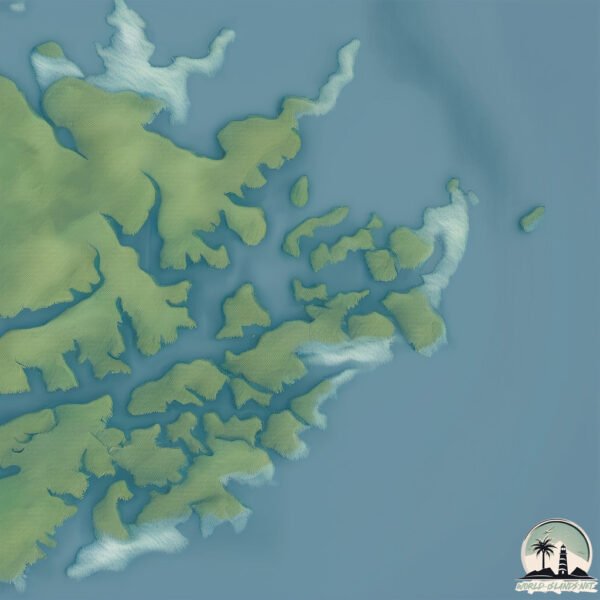Welcome to Arapawa , a Temperate island in the Tasman Sea, part of the majestic Pacific Ocean. This guide offers a comprehensive overview of what makes Arapawa unique – from its geography and climate to its population, infrastructure, and beyond. Dive into the details:
Geography and size of Arapawa
Size: 77.9 km²Coastline: 163.5 kmOcean: Pacific OceanSea: Tasman SeaContinent: Oceania
Arapawa is a Medium Island spanning 78 km² with a coastline of 164 km.
Archipel: Polynesia – A region of more than 1,000 islands in the central and southern Pacific Ocean, known for their diverse Polynesian cultures, stunning landscapes, and marine biodiversity.
Tectonic Plate: Kermadec – A small oceanic plate in the south Pacific, east of the Kermadec Trench. It’s part of the active boundary between the Pacific and Indo-Australian plates, known for deep ocean trenches and volcanic island arcs.
The geographic heart of the island is pinpointed at these coordinates:
Climate and weather of Arapawa
Climate Zone: TemperateClimate Details: Temperate Oceanic ClimateTemperature: Warm Summer
Climate Characteristics: Known for its moderate year-round temperatures with ample rainfall and no dry season. Warm summers are characteristic.
Topography and nature of Arapawa
Timezone: UTC+12:00Timezone places: Pacific/AucklandMax. Elevation: 427 m Mean Elevation: 158 mVegetation: Evergreen Needleleaf ForestTree Coverage: 99%
The mean elevation is 158 m. The highest elevation on the island reaches approximately 427 meters above sea level. The island is characterized by Hills: Gently sloping landforms with rounded tops, having a maximum elevation between 200 and 500 meters. Hills contribute to a varied landscape on islands.
Dominating Vegetation: Evergreen Needleleaf Forest
Vegetation: 6 vegetation zones – Very Highly Diverse Island
Infrastructure and Travelling to Arapawa
Does the island have a public airport? no .
Does the island have a major port? no .
The mean population of Arapawa is 0 per km². Arapawa is Uninhabited. The island belongs to New Zealand .
The name of the island resonates across different cultures and languages. Here is how it is known around the world: Arabic: الجزيرة الجنوبية; German: Südinsel; Spanish: Isla Sur; French: Île du Sud; Portuguese: Ilha Sul; Russian: Южный остров; Chinese: 南島
Continuing your journey, D’Urville is the next notable island, situated merely km away.
Error 403 The request cannot be completed because you have exceeded your
quota . : quotaExceeded
New Zealand is classified as Developed region: G7: Group of Seven – Major advanced economies, including Canada, France, Germany, Italy, Japan, the United Kingdom, and the United States. The level of income is High income: OECD.
News – Latest Updates and Headlines from Arapawa
Stay informed with the most recent news and important headlines from Arapawa. Here’s a roundup of the latest developments.
Loading...
Please note: The data used here has been primarily extracted from satellite readings. Deviations from exact values may occur, particularly regarding the height of elevations and population density. Land area and coastline measurements refer to average values at mean high tide.

